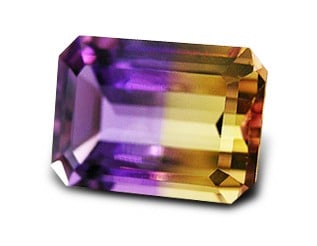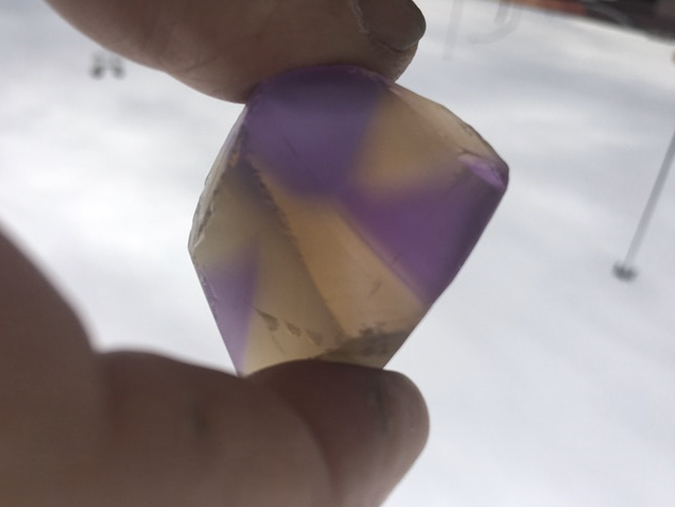The whole world is littered with stark juxtapositions. Good and evil, night and day, young and old, happy and sad, rich and poor. Complimentary colors work in a similar way – these are colors that if combined create grey, black or white. Red and green are probably the most well-known pairing, but one of the pairs that is most loved by artists is the contrasting colors of yellow and purple. The color of sunsets and sunrises, when they are used side by side, each color brightens the other. Wouldn’t it be amazing if you could find something like that in a gemstone?
You can!
The more you learn about gemstones, the more you realize that Mother Nature can so some pretty epic stuff. One of the most ridiculously extraordinary things She’s ever come up with is Ametrine. This fascinating gem is a mixture of purple Amethyst and yellow Citrine. It can either be a 50:50 split or as a ‘Sunburst’ mix of swirling colors.
How?
Good question! Both Amethyst and Citrine are closely related members of the Quartz family. They are both made up of silicon dioxide (SiO2), colored by iron (Fe+++) impurities in the gem. In almost every case, mines will produce either a purple or a yellow variety of this gem. In just one mine in the world, the Anahi mine in Bolivia, this gem naturally crystallizes with two colors alongside each other.

This is due to a natural heat graduation through the crystal during formation. This changes the chemical bonds between the iron impurities and the oxygen, changing their molecular structure, meaning that the gem appears yellow rather than purple. If even a little more heat had been present, the entire crystal would have formed as Citrine.
Is it unique?
Not quite. There are other gems which naturally show more than one color. This is usually due to color change (the ability to show a different color in different lighting conditions), or pleochroism (the ability to show a different color from different angles). There are very few gemstones which show both colors strongly and equally in all lighting conditions and from every angle. Ametrine is one of these, Bi-Color Tourmaline is the other.

Bi-Color Tourmaline has a greater range of color, with varieties found in combinations of pink, red, green, yellow or brown. Where Ametrine pips it to the post though, is clarity. Tourmaline is often included or cloudy, but Ametrine is found with exceptional clarity.
Cutting
For a long time, Ametrine was cut in 50:50 octagon shapes, as if it was a Bi-Color Tourmaline. Tourmaline grows in long, thin crystals (rough Tourmaline always makes me think of rhubarb!) with the color usually in an obvious split between one end and the other, so it makes sense to cut a Bi-Color Tourmaline in an octagon shape. Ametrine grows with the color in zones and so cutting it as a 50:50 split is hugely wasteful.

More recently, people have begun to prefer less conform cuts, showing off the individual crystal’s coloring. The vividness of both colors is deemed more important than a perfect color split down the middle of the gem. Lapidarists have also begun to play with unusual ‘sunburst’ and fancy cuts. By choosing areas where the colors naturally swirl together, a whole host of subtle hues and nuances of the two colors can be seen when looking through the finished gem.
Many cutting houses have also found that in rough Ametrine pieces without much saturation of color, they are forced to cut the gem into baguette shapes with huge table facets, to let enough light in and give a good enough view so that what little color split there is in the gem can be seen. Our recent Ametrine rough has been so richly colored that we are able to cut it in a range of cuts, (unusually including princess cuts) and cut it properly, to maximize beauty and light return, while keeping the richness of color.

Why we love it
This extraordinary and rare yellow and purple gemstone is one of the most unique and mesmerizing gemstones ever created by Mother Nature. It is also more affordable than most people would expect of such a rare single-locational stone. Whether you’re a gem aficionado or not, this is a gem guaranteed to enthrall and captivate the soul.

